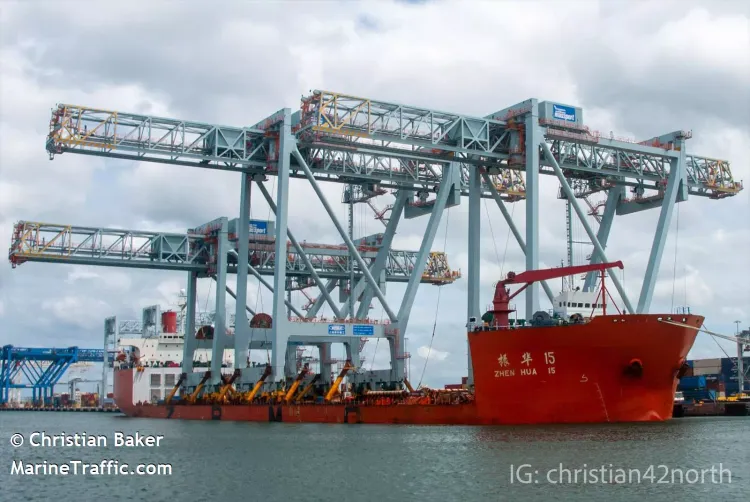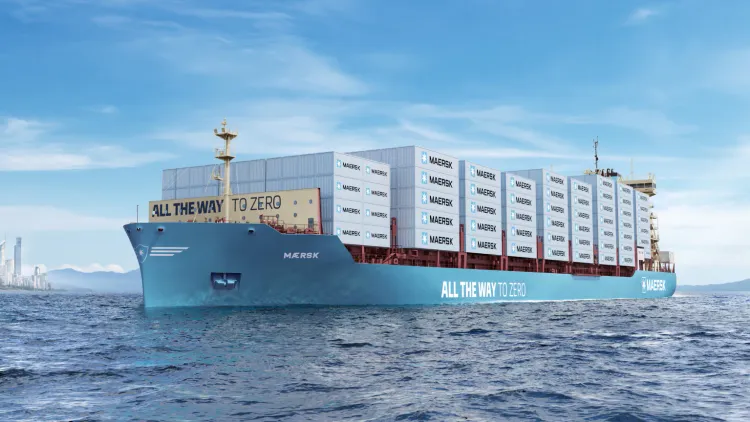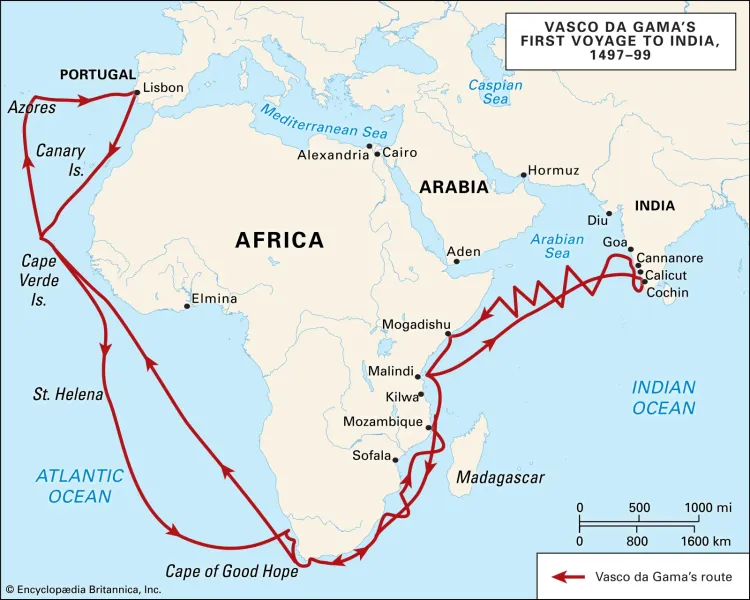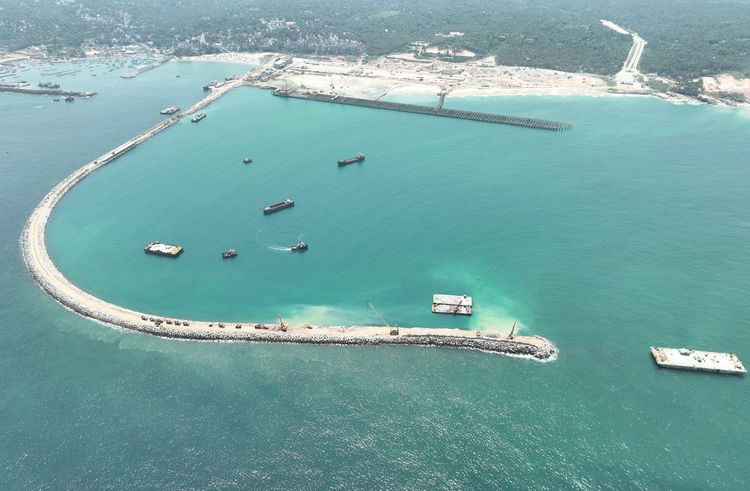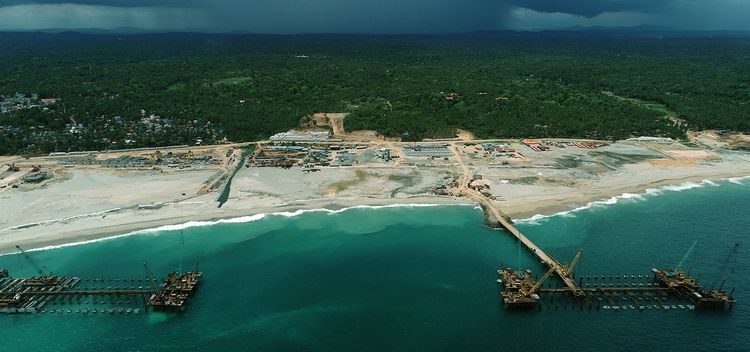To wait seven decades for a dream, and suddenly one day to be able to see that dream unravelling before his eyes, this is what G Govinda Menon, a centenarian, has been blessed with in recent days!
The protagonist of the story is the Vizhinjam International Transshipment Terminal, which is currently under construction in Thiruvananthapuram in the south of India. It was one of the peaceful days following the end of the 140-day-long Vizhinjam anti-port strike that I felt like meeting MR. GG Menon. By then I had heard a little about Menon. He spoke with cheerfulness beyond his years when I met him at his home behind the tennis club in Thiruvananthapuram.
The present capacity and features of India's Vizhinjam Mother Port project were not known then. However, the significance of a port for the princely state of Travancore was considered, and a decision regarding the same was passed. At that time the Maharaja Sri Chithira Thirunnal was a minor. It is widely known that the Vizhinjam port dream belonged to his mother. Sir CP Ramaswami Iyer, who was the then Diwan, coordinated the affairs.
An engineer from Britain arrived in Travancore on the royal orders to survey the Vizhinjam sea and coast. At the time, there was an Airport Division under the Public Works Department. In 1946, Vizhinjam Harbor Special Section was formed under that division. GG Menon, a graduate in civil engineering from the second batch in College of Engineering, Thiruvananthapuram, also joined the Vizhinjam survey team.
Given the limited facilities at the time, when the team went out to the sea in a big boat, there would be kattumaram (traditional watercraft made by tying together tree trunks) on either side for protection. The survey was carried out about half a mile inland. The main instruments used were sounding lead rope and sounding sextant. It was found that there is no significant variation in the sand level in the Vizhinjam seabed and the depth overall has been consistent. A tidal scale was placed on the rock formation north of Vizhinjam village. Along the electric posts on the shore, flag boards for the survey control point were installed. The surrounding rock formation was discovered through percussion drilling. With the help of these systems data was collected intermittently during the years 1946-49.
All the data thus obtained was sent to Britain, based on which the team sent the report of the Vizhinjam project to the then government. But once again Vizhinjam's file was caught in red tape and put aside. By the time, India gained independence and the royal regime made way for democracy with Travancore and Kochi becoming one. The argument that there is no need for a new port to threaten the existing Kochi port gained prominence in Thiru-Kochi. The office set up for Vizhinjam Port was abolished, and GG Menon was transferred to the Nagercoil office of the Public Works Department.
For seventy years, Menon carried with him the dream for a port at Vizhinjam. At times, he would jot down some notes or research about this. But as the public's curiosity for his knowledge, experience and memory receded over time, his hope to see the port in his lifetime was lost again. Mr. Menon has been keenly following all developments related to Vizhinjam port including the signing of agreement between Government of Kerala and the Adani Group in 2015, and the latest anti-port protests.
It was during this time that I went to meet him with former Deputy Chief Hydrographic Surveyor Satish Gopi. Mr. Menon eagerly awaits anyone who meets him to talk about the Vizhinjam project, and this was the case when we visited him as well. This is when we gauged his interest to see the project area in person, eventually arranging the visit. Menon and his sons drove down to the Vizhinjam sea where he had once carried out the survey in boat and kattumaram. Standing at the load-out point above the sea, which is about 18-20 meters deep, Menon recalled the old figures and compared them with the current 800-metre wharf. It is believed that such a large breakwater or wharf was not planned when the survey was conducted in the 1940s. “This has now evolved to become a huge project. I feel very lucky to have seen all this”, Menon exclaimed as he witnessed his 70-year dream come true.
A warm welcome was arranged for Menon at the instructions of Rajesh Jha, CEO of Vizhinjam Adani Port. Project Director Ethiraj Ramachandran explained the construction and progress of the project with the help of an animated film. Security Operations Officer Deepesh K, HR Manager Vipin S and Corporate Affairs Manager Valsala Kumar led the site visit and explained the progress of the project. Wilfred Culas, Secretary, Prashanth David, Executive committee member of Vizhinjam Motherport Action Samithi (V-mac) were also present during the visit. Menon enthusiastically enquired about the arrival of the first ship. He thanked everyone and his own luck to be able to witness the project progress in person.
With the promise that we will return with him on the day the first ship arrives, Menon left the project site. It was fulfilling to experience the port development through the eyes of someone who initiated the work of the modern Vizhinjam Port project 70 years ago.
Vizhinjam port, which was actively functional more than two thousand years ago, became inactive later. It was in 1905 that we again read about the project in history. That attempt also failed. Much later, GG Menon’s efforts towards the port also did not come to fruition. As 2023 dawns in a few days, it is the dreams of multiple generations that we strive to achieve with the first ship set to sail in the Vizhinjam waters soon.
The post was originally written by Elias John in Malayalam and later translated to English
This article © 2023 by Motherport News is licensed under CC BY 4.0
